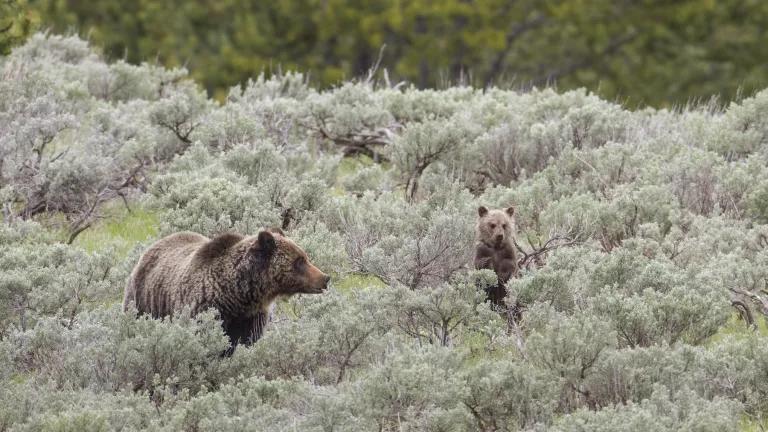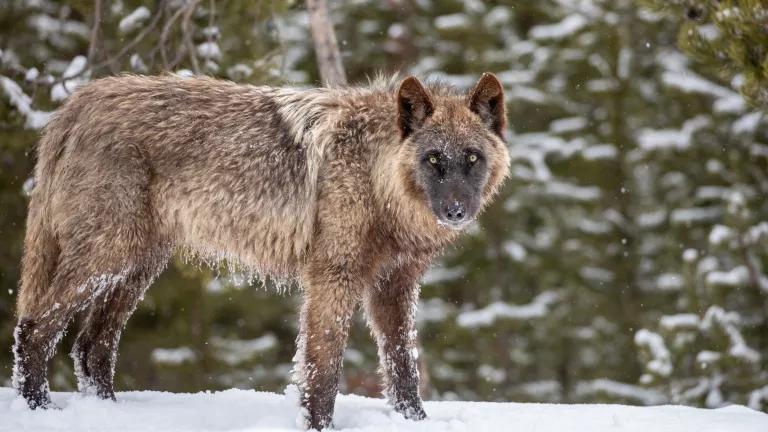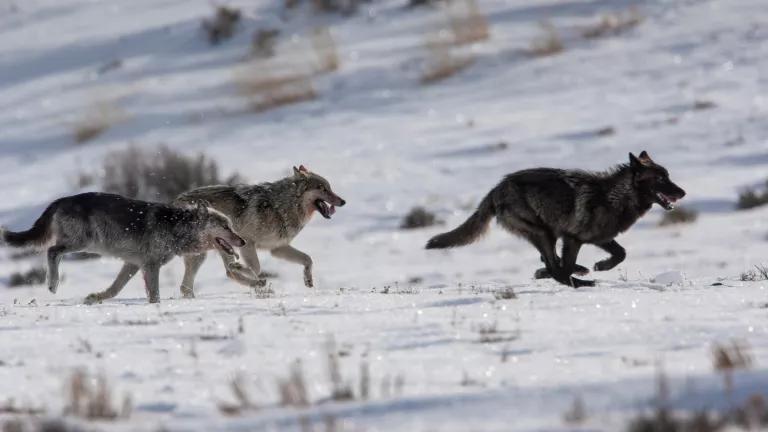Fish and Wildlife Service to Review Grizzly Bear Protections
USFWS will assess if grizzly bears require ongoing protection in the Greater Yellowstone and Northern Continental Divide ecosystems.

Placed on the endangered species list in 1975, grizzly bears have one of the slowest reproductive rates among terrestrial mammals. It can take a female grizzly bear more than ten years to replace herself in the population.
The U.S. Fish and Wildlife Service (USFWS) has announced its intention to conduct a status review of grizzly bears in the Northern Continental Divide and Greater Yellowstone ecosystems. This decision comes in response to two petitions filed in late 2021 and early 2022 by the states of Montana and Wyoming, respectively, that argued the two grizzly bear populations are fully recovered and should have their federal Endangered Species Act (ESA) protections removed, thereby turning over their management to the states. A separate petition, filed by the state of Idaho, requested that all grizzly bears in the lower-48 states be delisted—it was denied.
Grizzly bears are a keystone species that have an outsized role in shaping the landscape and influencing a diversity of other plant and animal populations. They occupy less than two percent of their former range in the lower 48, with all their occupied habitat located within the Northern Rockies states. Once numbering more than 50,000 animals, the population is currently estimated to be approximately 2,000.
This decision by the USFWS only indicates that the agency will proceed with a 12-month status review of these two bear populations—it does not mean that the USFWS will or should conclude that these populations are ready to be delisted. Although the Northern Continental Divide and Greater Yellowstone grizzly bear populations have been growing both in numbers and geographic reach as a result of protections afforded to them by the ESA, their future remains uncertain. Many dynamic natural and human-caused factors will influence the species’ health and resiliency. In 2021, the USFWS completed a 5-year status review of grizzly bears in the lower-48 states, recommending that bears retain their status as a threatened species under the ESA. After 40+ years of investment and slow recovery gains, dedicated conservation efforts must continue to secure a durable future for these bears.

Grizzlies—like this one on Togwotee Pass in Wyoming—face increasing pressures from roadways and new housing developments.
The public is invited—and encouraged—to provide information the agency should consider as it conducts its status review. NRDC is committed to a healthy and robust grizzly bear population in the Northern Rockies—as such, we will submit evidence for the agency to consider in its status review. As the USFWS initiates this formal review, NRDC is focused on three primary concerns.
- Montana, Wyoming, and Idaho have not demonstrated an ability to secure and sustain a healthy and robust grizzly bear population after ESA protections are removed. Over the past two years, Montana’s legislature has demonstrated a troubling pattern of weakening protections for large carnivores more broadly, and grizzly bears have specifically been a target. For example, in 2021 the Montana Legislature passed a series of new laws intended to reduce protections for bears and wolves. Retired wildlife professionals from across the state pleaded for restraint when problematic legislation was proposed, but to no avail. Montana’s 2023 legislative session is similarly targeting wolves and bears, with new legislation that could further deteriorate the state’s ability to limit bear mortalities. In the announcement that the USFWS will commence a 12-month status review, the agency cautioned that the impacts of recently enacted state statues affecting grizzly bears are concerning and will require careful consideration as part of this review. Finally, the wildlife agencies in all three states have made clear their intentions to initiate public grizzly bear hunting once bears are delisted, indicating that population reduction is a concern.
- The states are lacking clear plans and commitments to facilitating natural connectivity between grizzly bear populations. Discrete areas of protected habitat aren’t enough—grizzlies also need to be able to move safely between protected areas, including between the Greater Yellowstone and Northern Continental Divide populations, and to other recovery areas. The state of Montana’s recent draft grizzly bear management plan is inadequate for many reasons, including for failing to prioritize grizzly bear occupancy and movement in important connectivity areas. Specifically, the draft plan proposes allowing trophy hunting and removing conflict-free bears in connectivity areas. Until Montana prioritizes connectivity goals, the Greater Yellowstone population is sure to remain isolated and vulnerable.
- Ongoing pressures from climate change and an increasing human footprint throughout the three states. Climate change is taking a toll on critical food sources for grizzly bears, such as the seeds from the declining whitebark pine trees and berry production that suffers during years of drought. When natural food sources are scarce, bears are more likely to seek out unnatural food sources to meet their nutritional needs, leading to more conflicts and dead bears. In addition, Montana is rapidly losing wildlife habitat as its population grows, and development has accelerated since the COVID pandemic. According to Headwaters Economics more than a quarter of all homes in Montana have been built since 2000. This has major impacts on the ability of grizzly bears to move safely through the landscape, especially as the expanding housing footprint and road networks are eating into secure grizzly bear habitat.

An electric fence installed in a sheep pasture in Montana to prevent grizzly bears from securing an unnatural food source.
Ensuring a future for a healthy, resilient, and recovered grizzly bear population will require a deep commitment to collaboration, cooperation, and partnerships to advance solutions that allow people and bears to safely and successfully share the landscape. NRDC has dedicated time and resources to supporting local communities in their proactive efforts to live with bears. While the status review proceeds, NRDC will maintain its commitment to advancing grizzly bear recovery by working to reduce human-bear conflicts and secure science-backed policies that protect a future for bears. Regardless of listing status, it is our collective responsibility to save space for this uniquely valuable North American species.




